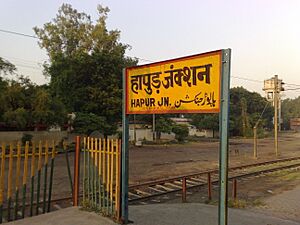Diglossia facts for kids

Diglossia is a special situation where a group of people uses two different forms of a language or even two different dialects. They use one form for everyday talks and informal situations, and the other for more formal settings like school, government, or religious ceremonies.
Contents
What is Diglossia?
Imagine you have two versions of a language. One is like your comfy, everyday clothes – easy to use for talking with friends and family. The other is like your fancy outfit – used for important events, like school presentations or official meetings. That's a bit like diglossia!
In diglossia, these two language forms are often called the "high" (H) variety and the "low" (L) variety.
- The high (H) variety is usually taught in schools. It's used for writing, formal speeches, news broadcasts, and religious texts. It often has a long history and is seen as more proper or prestigious.
- The low (L) variety is what people speak in their daily lives. It's used at home, with friends, in local markets, and for casual conversations. It's learned naturally from a young age.
It's important to remember that diglossia is not the same as bilingualism. Bilingualism means a person knows two completely different languages, like English and Spanish, and can use them in many situations. Diglossia is about two forms of the *same* language (or very closely related ones) that have specific roles in society.
Where Can We See Diglossia?
Diglossia happens in many places around the world. Here are a few examples:
Arabic-Speaking Countries
In many Arabic-speaking countries, people experience diglossia.
- The high (H) variety is Modern Standard Arabic (MSA). This is the language of the Quran, classical literature, news, and formal education. It's understood across the Arab world.
- The low (L) variety includes the many different local Arabic dialects, like Egyptian Arabic, Moroccan Arabic, or Syrian Arabic. These dialects are what people speak every day in their homes and communities. They can be quite different from each other and from MSA.
Switzerland
In the German-speaking parts of Switzerland, there's a clear example of diglossia.
- The high (H) variety is Standard German. This is the language used in schools, for writing, in official documents, and on television news.
- The low (L) variety is Swiss German. This is a group of dialects spoken daily by almost everyone. Swiss German is very different from Standard German, and people from Germany often find it hard to understand.
Paraguay
Paraguay offers an interesting example where two distinct languages are in a diglossic relationship.
- The high (H) variety is Spanish. It's the language of government, business, and higher education.
- The low (L) variety is Guarani. This is an indigenous language spoken by most Paraguayans in their daily lives, especially in rural areas. Many people speak both Spanish and Guarani, switching between them depending on the situation.
Why Does Diglossia Happen?
Diglossia can develop for several reasons:
- History: Sometimes, an older, more traditional form of a language becomes the formal variety, while the spoken language evolves over time.
- Education: The formal language is often taught in schools, making it the language of learning and official communication.
- Religion: Sacred texts or religious ceremonies might use an older, respected form of a language, which then becomes the high variety.
- Social Status: The high variety might be associated with higher social status, education, or power, while the low variety is seen as more common or informal.
Is Diglossia a Problem?
Diglossia can have both benefits and challenges.
Benefits of Diglossia
- Cultural Connection: The high variety can connect people to their history, literature, and religious traditions.
- Wider Communication: A common high variety can allow people from different regions (who speak different low varieties) to communicate formally. For example, people from different Arabic-speaking countries can understand each other through Modern Standard Arabic.
- Richness: Having two forms of a language can add to its richness and flexibility, allowing for different styles of expression.
Challenges of Diglossia
- Education Difficulties: Children who only speak the low variety at home might struggle when they start school, as lessons are often taught in the high variety. This can make learning harder.
- Social Inequality: Sometimes, people who are not fluent in the high variety might face disadvantages in education or jobs.
- Language Shift: In some cases, the low variety might slowly lose speakers if the high variety becomes too dominant, or vice versa.
Diglossia is a fascinating way that languages adapt to different social needs and situations in a community.
Related Topics
See Also
 In Spanish: Diglosia para niños
In Spanish: Diglosia para niños

